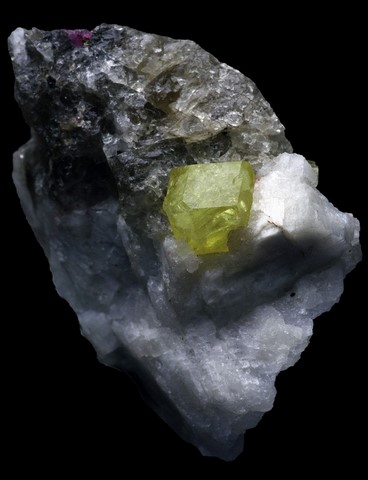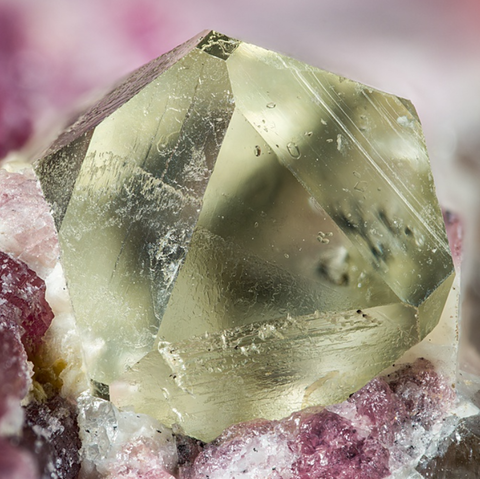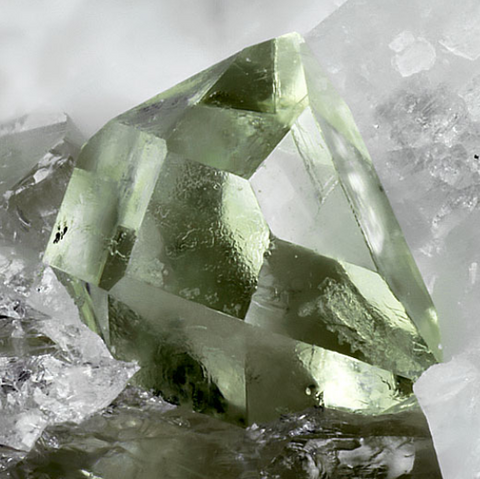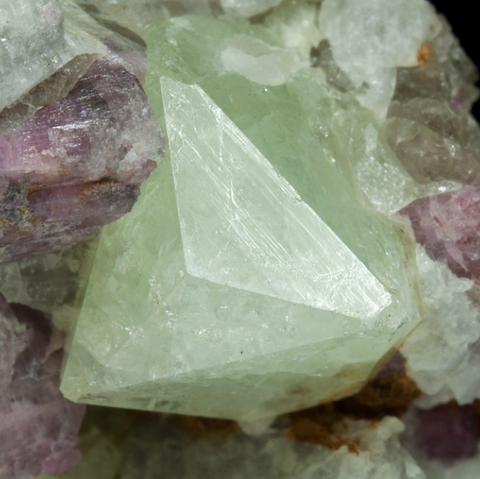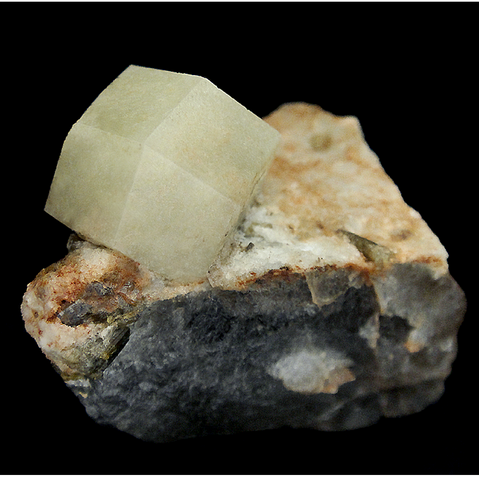RHODIZITE
Class : Carbonates, nitrates, borates
Subclass : Borates
Crystal System : Cubic
Chemistry : (K, Cs)Al4Be4(B, Be)12O28
Rarity : Rare
Rhodizite is a rare borate in sodium pegmatites, where it occurs alongside elbaite, spodumene, apatite and lepidolite. Its relatively loose crystalline structure provides large cavities in which large ions can be housed : cesium, but also rubidium, lithium, potassium or sodium. Rhodizite is practically the only cesium mineral. Its name comes from the Greek rhodizein (to be pink), because when heated with a blowtorch the flame turns pink-red. Its crystals are yellow, greyish or white, frequently dodecahedral, sometimes tetrahedral and rarely exceed one centimeter. Rhodizite is translucent to transparent, vitreous to adamantine luster. It has a very limited use as a gem.
Main photo : Rhodizite from Ifasina, Sahatsiho Ambohimanjaka, Ambositra, Amoron'i Mania, Madagascar
Rhodizite in the World
Twinning and special crystallizations
A very rare twin is known on {111}.
Fakes and treatments
No fake identify for this mineral species.
Hardness : 8
Density : 3.30 to 3.38
Fracture : Conchoidal
Trace : White
TP : Translucent to transparent
RI : 1.689 to 1.691
Birefringence : 0
Optical character : None
Pleochroism : None
Fluorescence : Yellow-green
Solubility : Insoluble
Magnetism : None
Radioactivity : None

